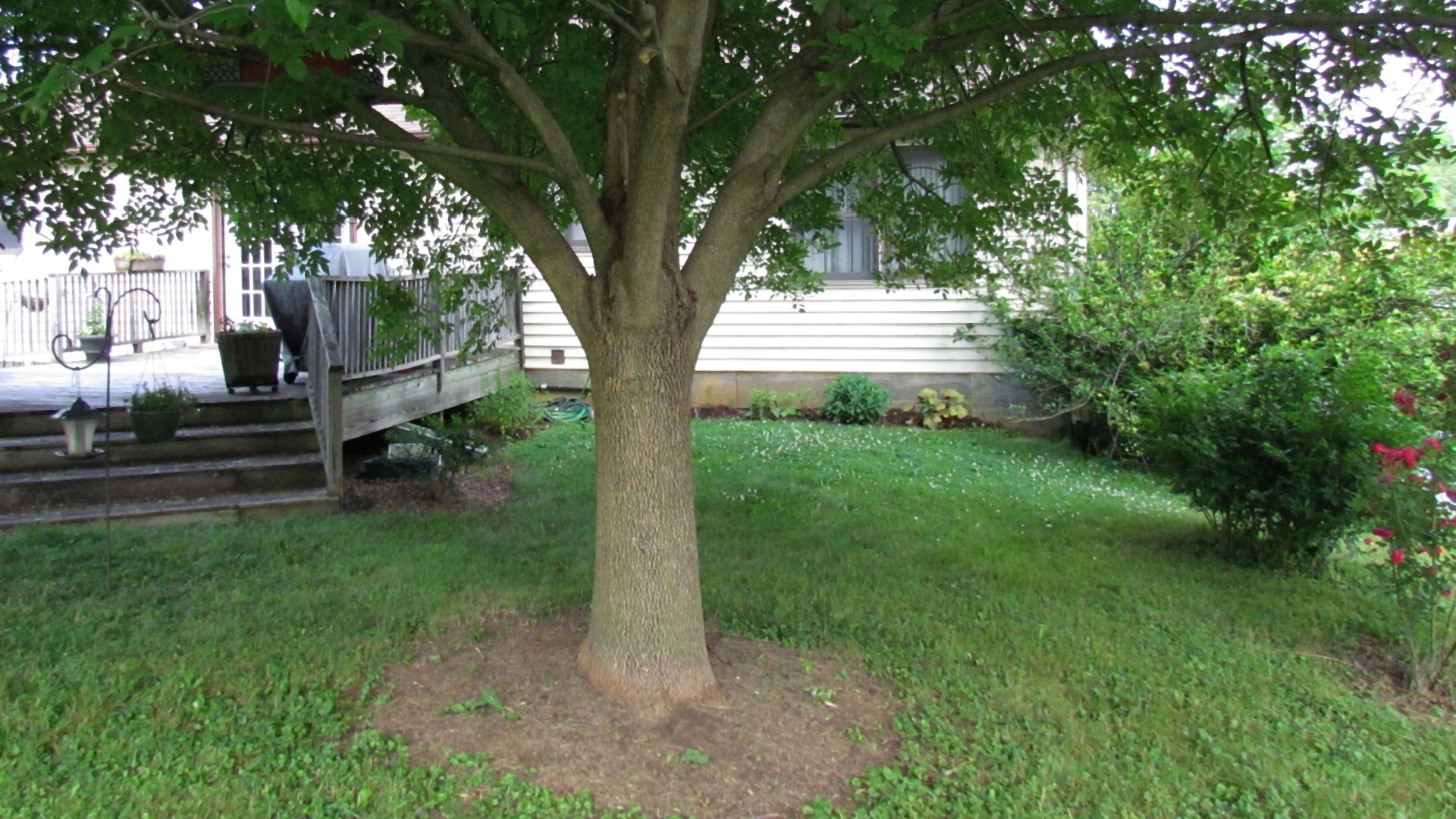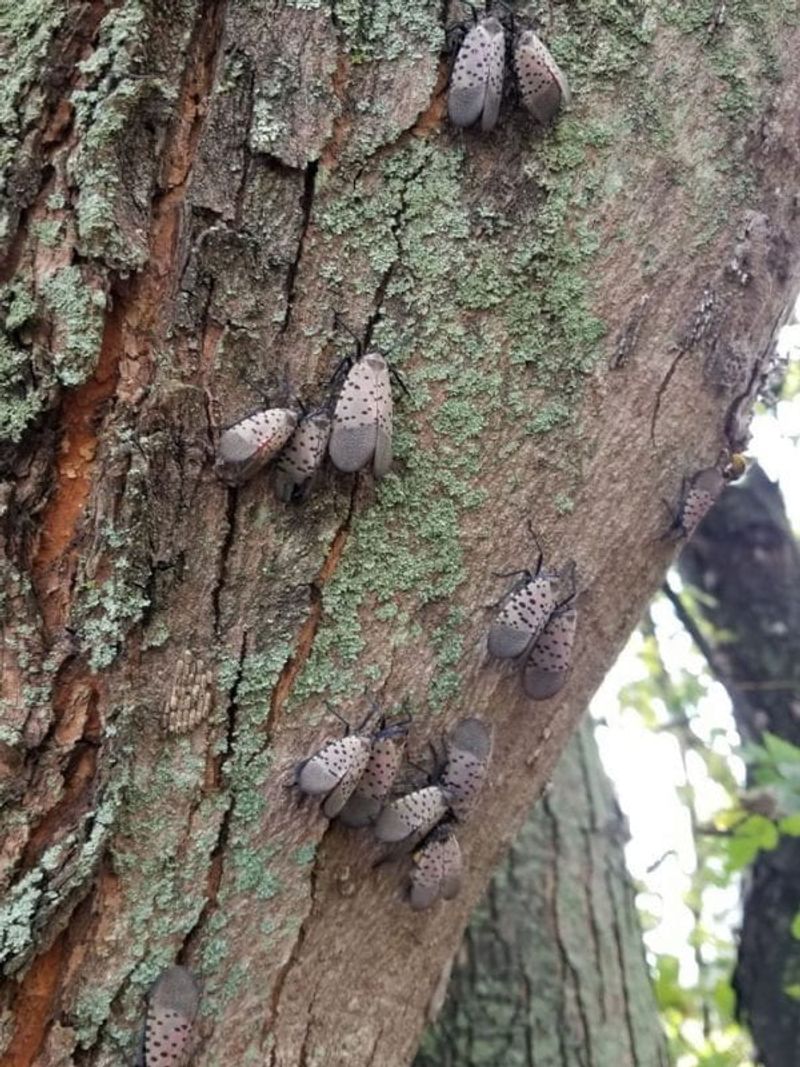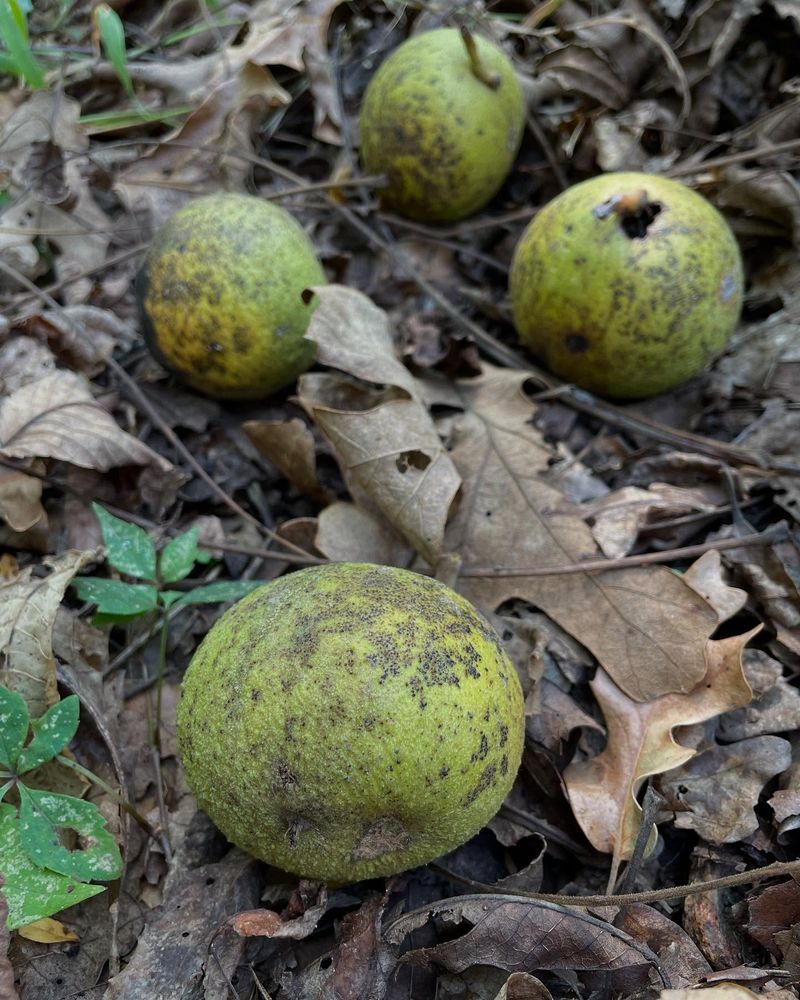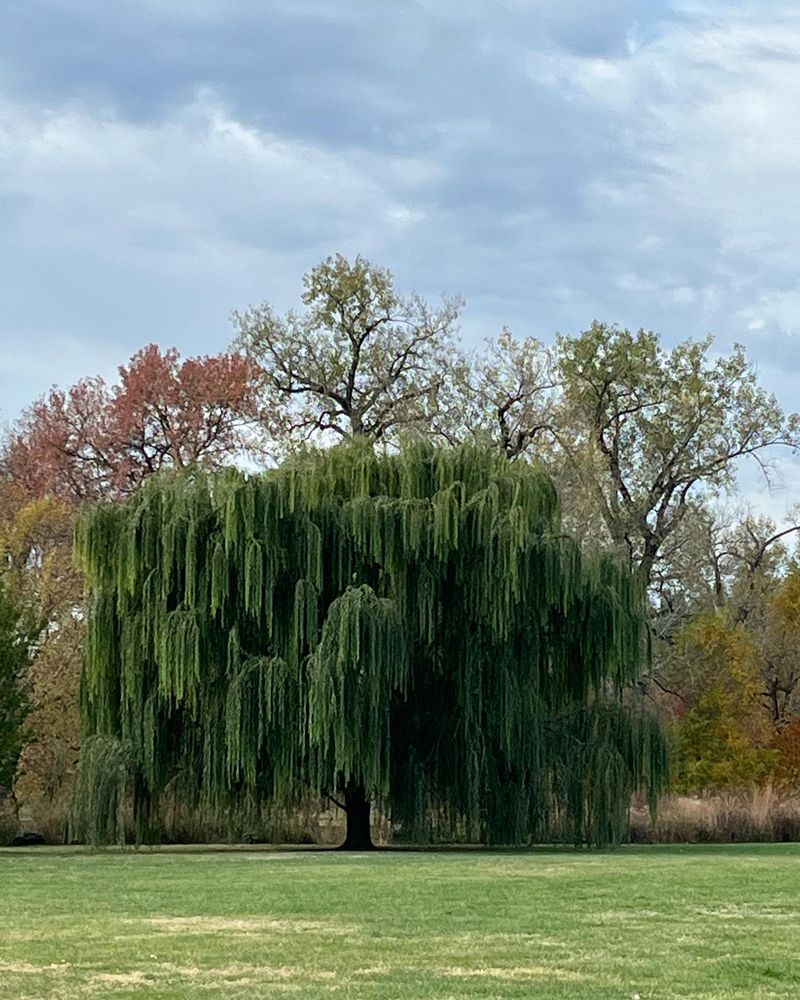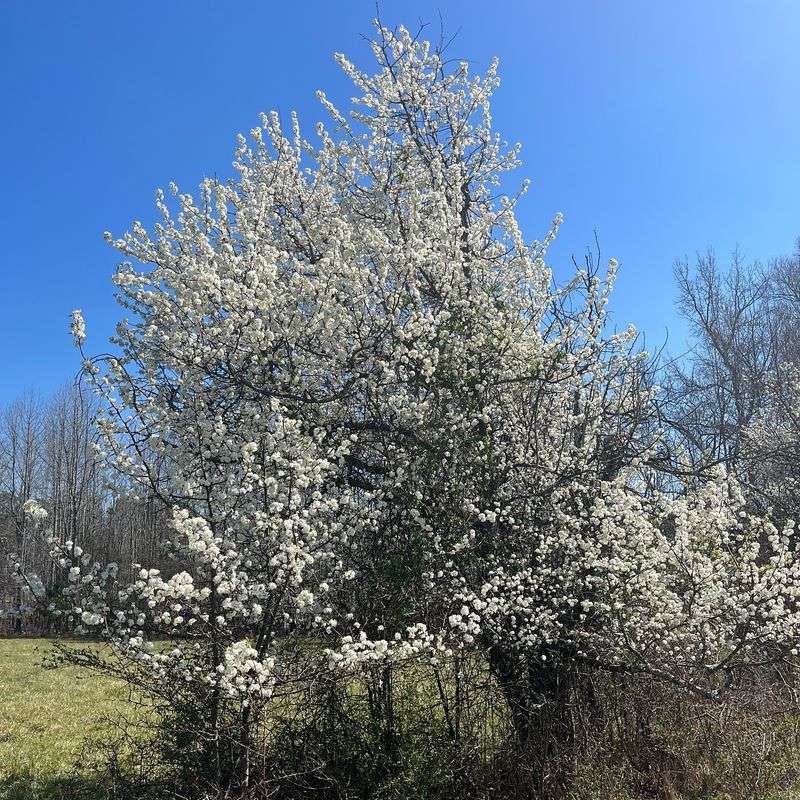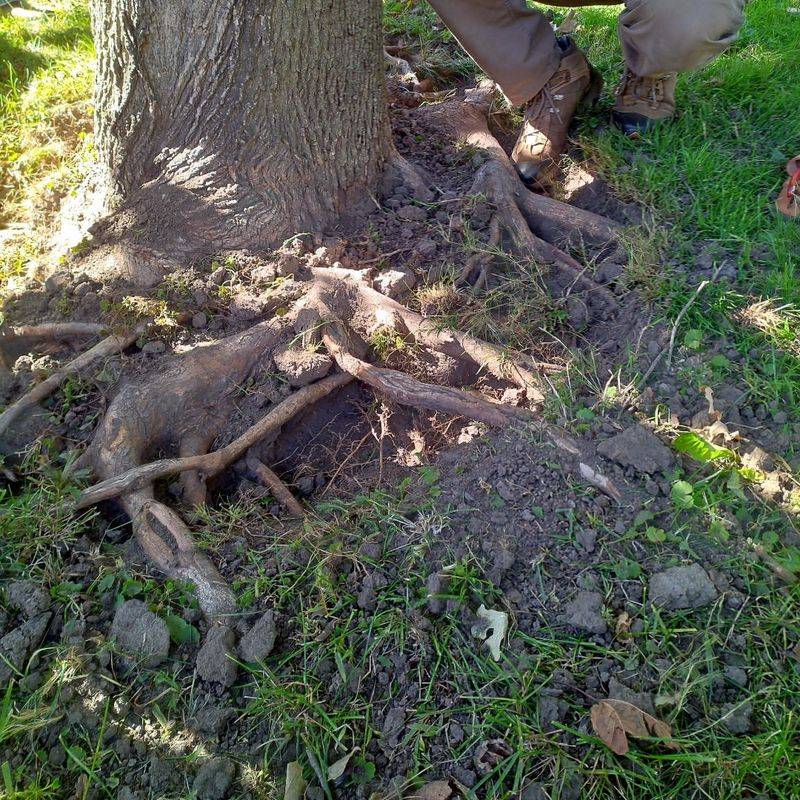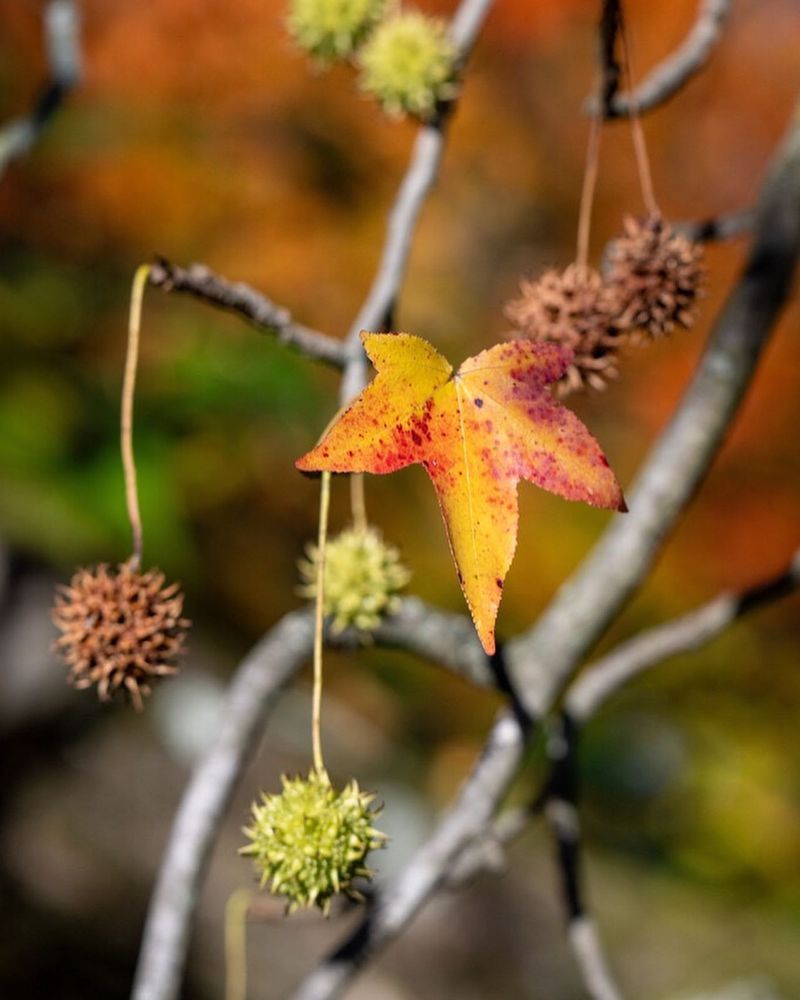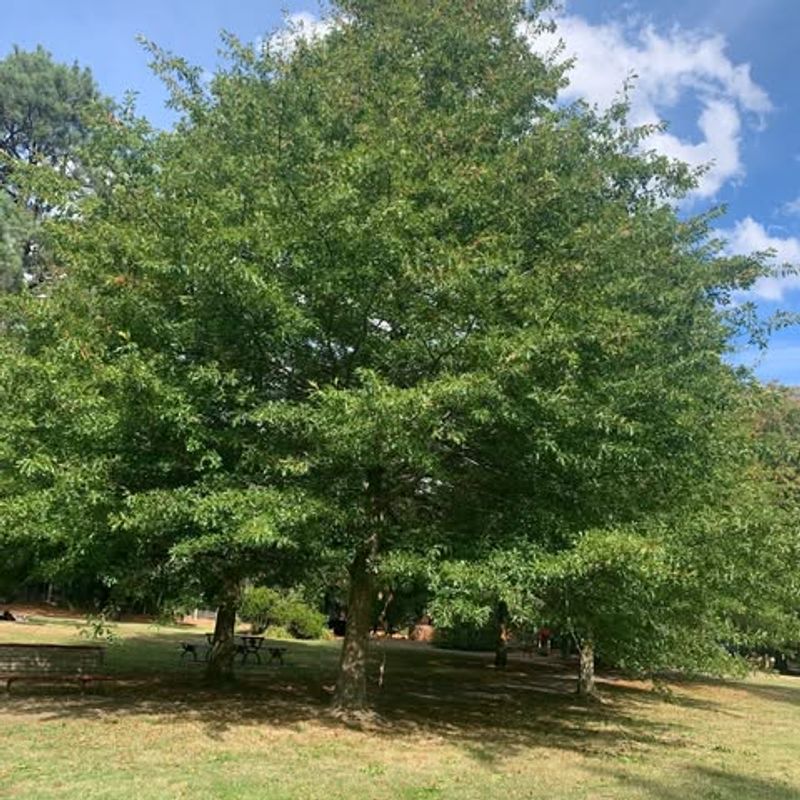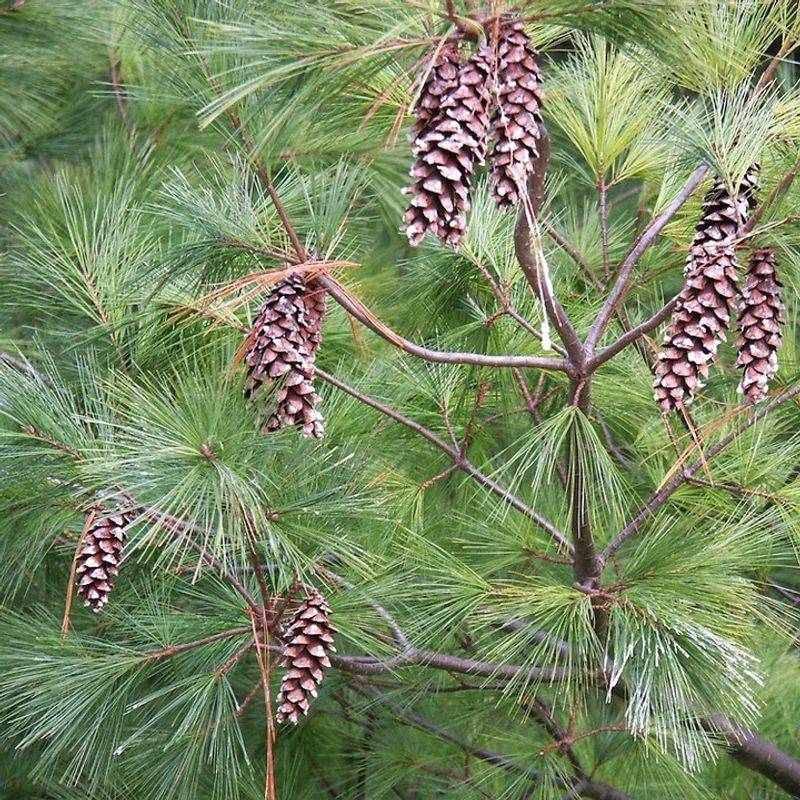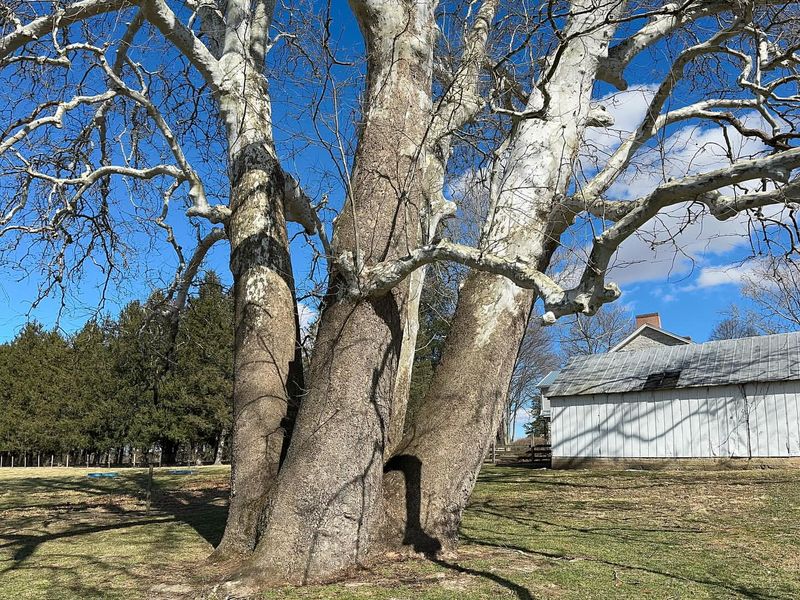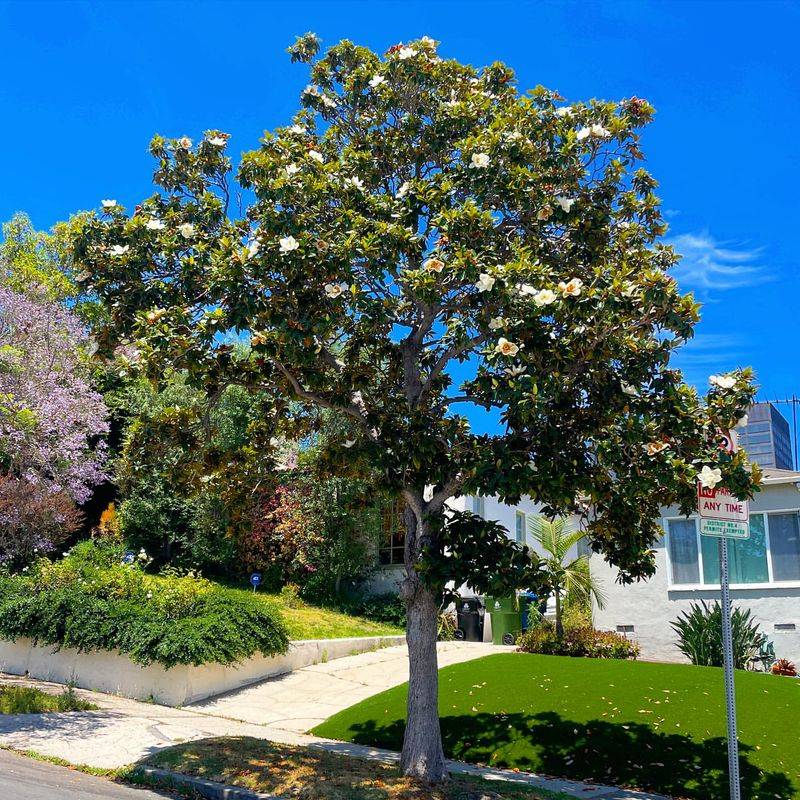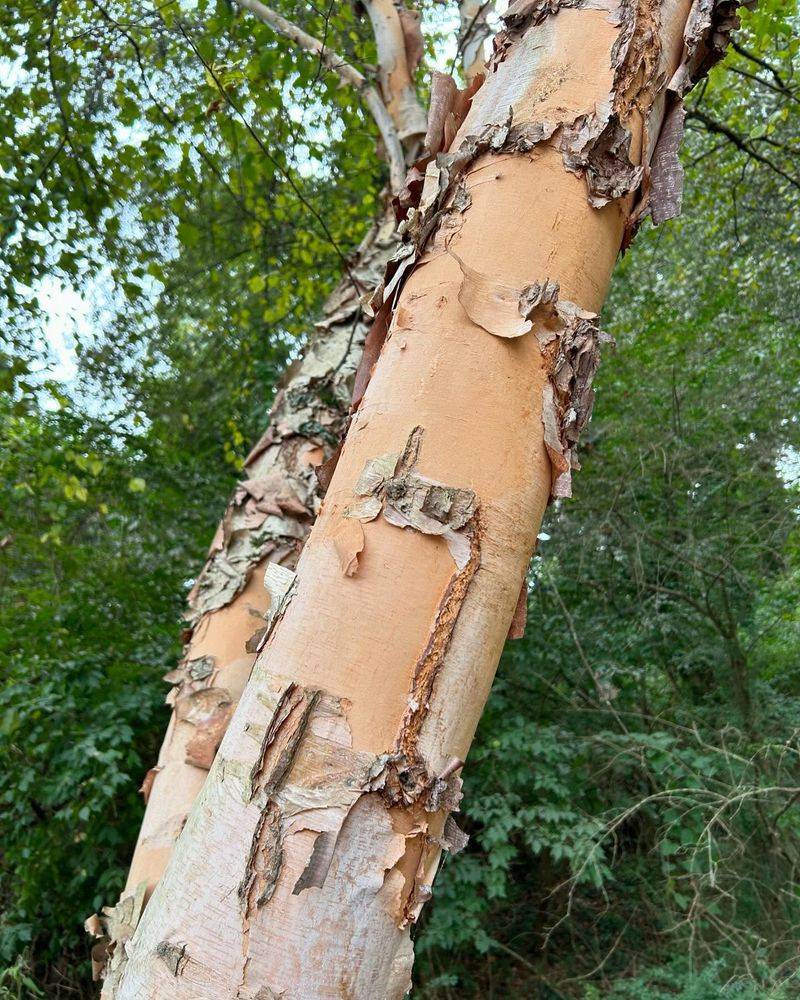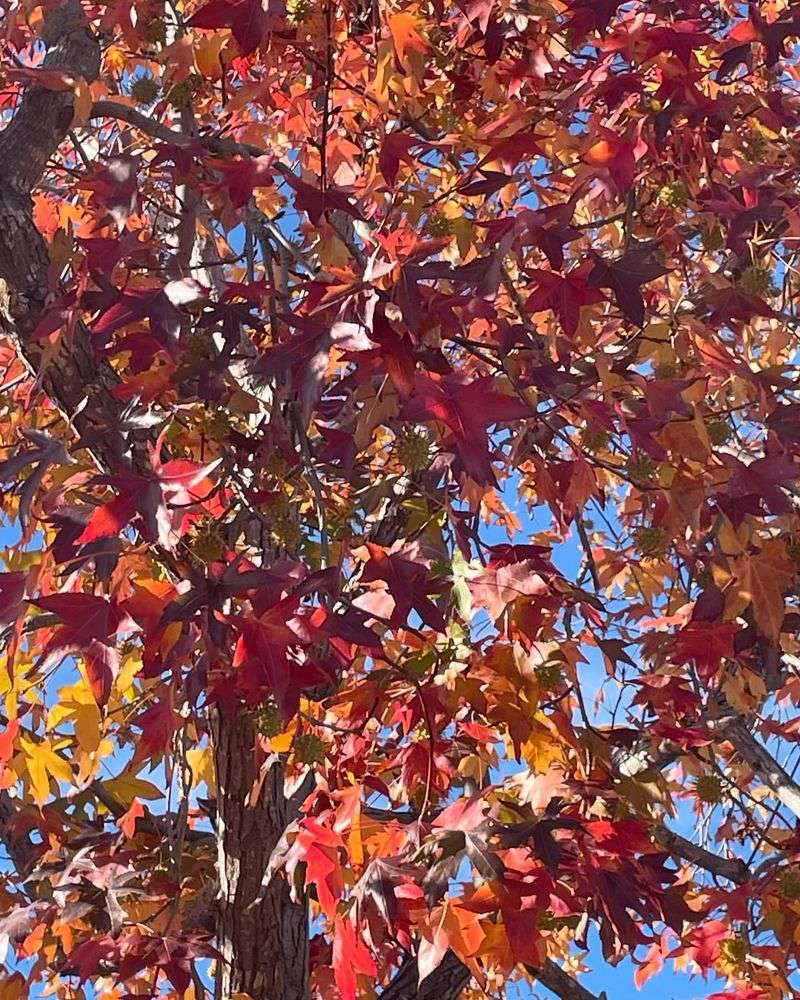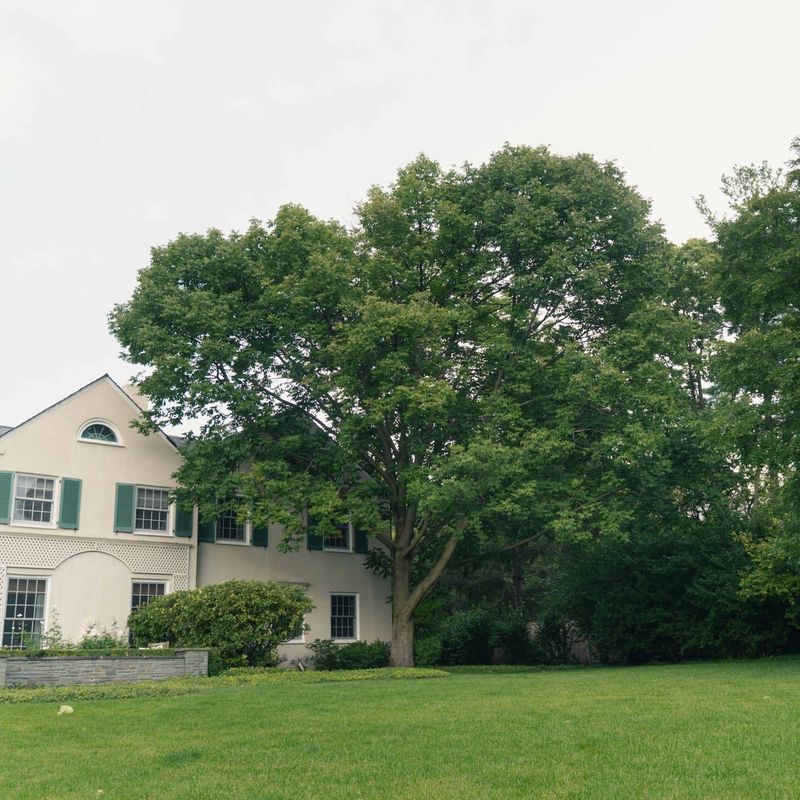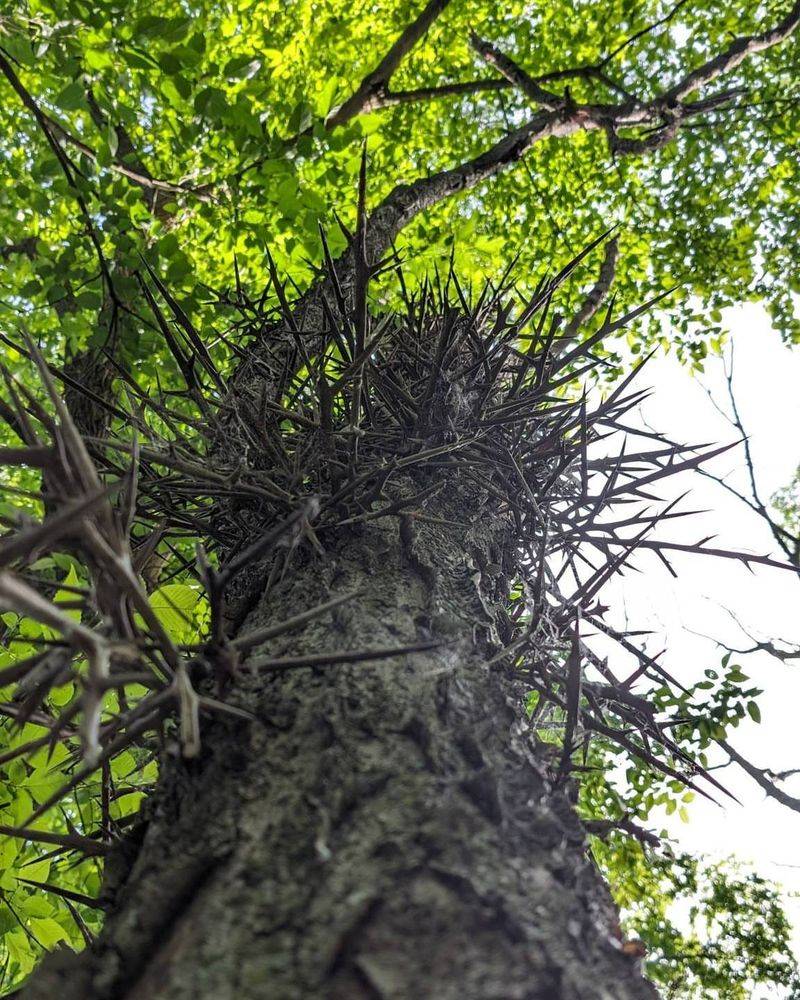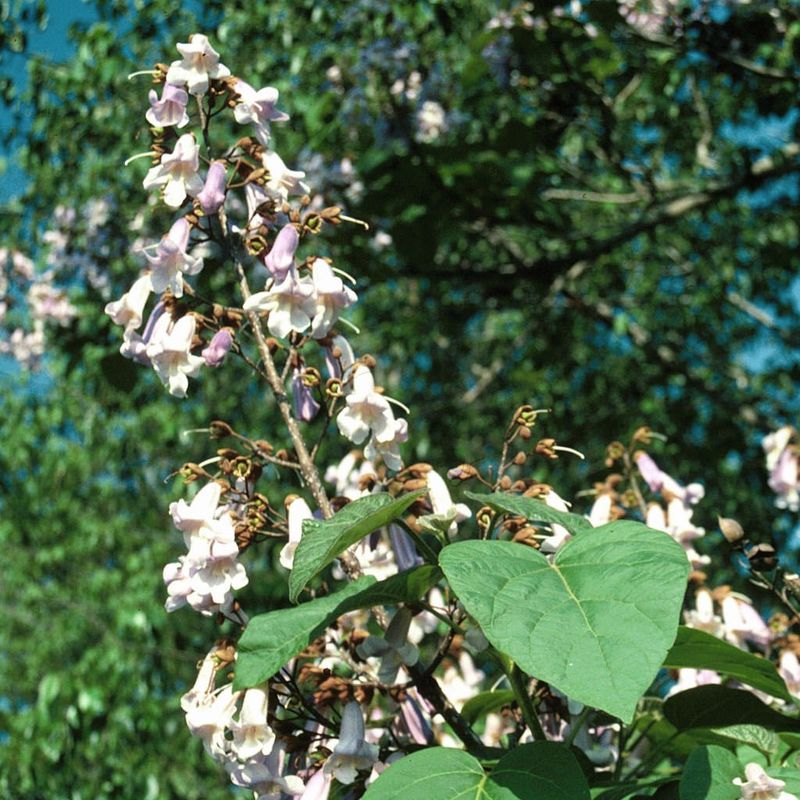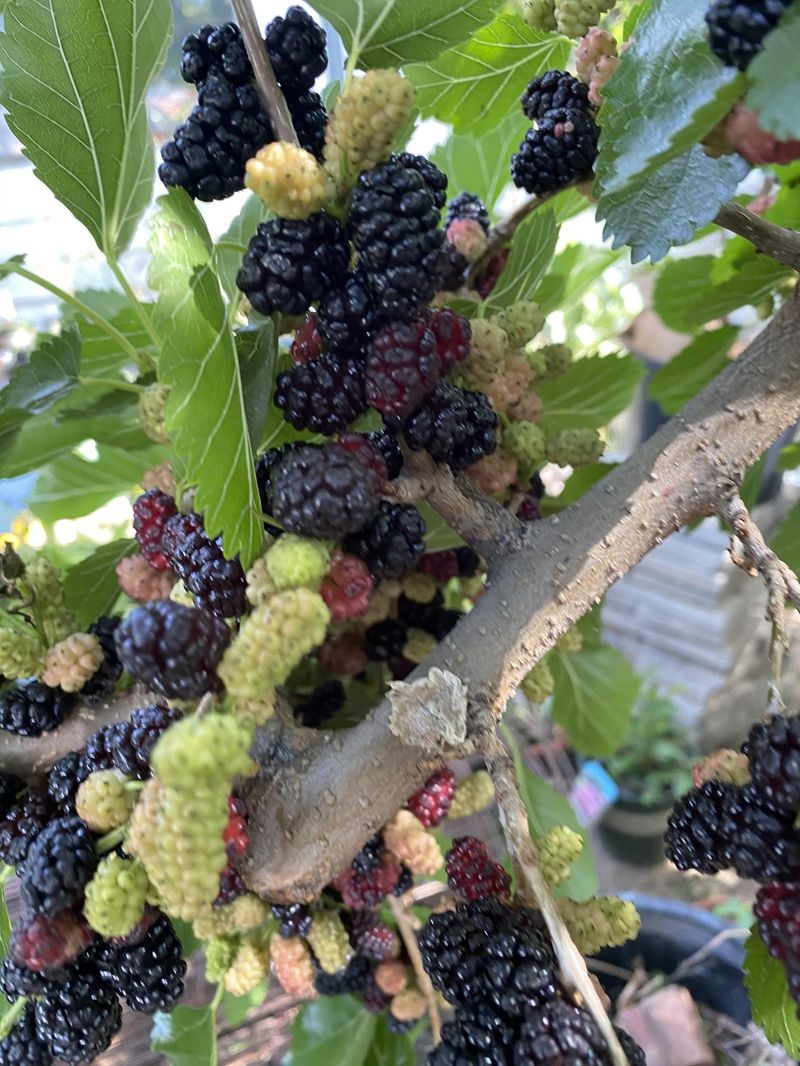Your Kentucky lawn might be suffering, and the culprit could be towering right above it. Many homeowners struggle with patchy, unhealthy grass without realizing their trees are the problem.
From aggressive root systems to toxic chemicals and excessive shade, certain trees can wreak havoc on that perfect green carpet you’re trying to maintain.
1. Silver Maple Menace
Silver maples grow lightning-fast but come with a hidden cost to your lawn. Their shallow, aggressive root systems spread widely just beneath the soil surface, creating a web that steals water and nutrients from nearby grass.
Over time, these roots become so dense that grass simply can’t compete. The dense canopy creates heavy shade too, making it nearly impossible for sun-loving Kentucky bluegrass to thrive underneath.
2. Black Walnut’s Toxic Trick
Beautiful but sneaky, black walnut trees produce a chemical called juglone that acts like a natural weed killer. This toxic substance seeps from all parts of the tree – roots, leaves, and nuts – poisoning the soil for many grasses and plants.
Kentucky lawns suffering under black walnuts often show mysterious dead zones that expand with the tree’s growth. The fallen nuts and leaves continue releasing juglone even after they’ve dropped, extending the damage year-round.
3. Weeping Willow Woes
Graceful and romantic, weeping willows hide a water-hogging nature that spells doom for your lawn. Their thirsty roots travel astonishing distances in search of moisture, often extending far beyond the tree’s canopy.
Kentucky’s climate already faces summer dry spells, and these trees make it worse by draining available water. Grass around willows struggles to establish and often appears perpetually stressed, especially during hot months when water competition reaches its peak.
4. Bradford Pear Problems
Once a suburban darling, Bradford pears create multiple lawn challenges. Their dense canopy blocks almost all sunlight, creating bare patches where grass simply gives up trying to grow. The shallow root system competes directly with lawn grasses for water and nutrients.
Fallen flower petals in spring form a smothering mat that suffocates grass beneath, while the tree’s dense branching prevents rainfall from reaching the lawn below, creating perpetually dry conditions.
5. Norway Maple Nightmare
Norway maples create a perfect storm of lawn-killing conditions. Their extraordinarily dense shade alone would challenge any grass, but they don’t stop there. These invaders produce surface roots that form a thick mat just below the soil, physically choking out grass roots.
Their leaves contain chemicals that break down slowly, creating a thick, smothering layer that blocks water and light from reaching the soil beneath.
6. Sweet Gum Suffocation
Sweet gum trees wage a two-front war on Kentucky lawns. Their spiky seed balls (gumballs) rain down by the thousands, creating a painful obstacle course that prevents proper lawn maintenance and blocks sunlight from reaching the grass.
Meanwhile, their extensive root systems create bumpy, uneven lawn surfaces that damage mowers and make walking hazardous. The constant cleanup required for the fallen gumballs often leads to neglected lawns that quickly deteriorate under this spiky invasion.
7. Pin Oak Predicament
Pin oaks seem innocent enough until you notice the perpetual brown patches beneath them. Their acidic leaf litter gradually changes soil pH to levels that Kentucky lawn grasses simply cannot tolerate. The dense, low-hanging branches create deep shade that compounds the problem.
Even drought-resistant grass varieties struggle to establish under these conditions. The oak’s tendency to hold dead leaves through winter creates additional lawn stress by blocking crucial early spring sunlight when grass needs to recover.
8. Eastern White Pine Peril
Those fluffy-looking eastern white pines are secretly lawn destroyers. Their fallen needles form a thick, slow-decomposing mat that physically blocks grass growth and gradually increases soil acidity to levels Kentucky bluegrass hates.
The shade beneath these evergreens is constant year-round, giving grass no seasonal recovery period. The shallow, spreading root system further stresses nearby turf by stealing available moisture, creating a battle your lawn simply cannot win without intervention.
9. Sycamore Shade Factory
Sycamores grow to massive proportions in Kentucky, creating some of the densest shade of any native tree. Their enormous leaves block nearly all sunlight, leaving grass struggling in perpetual darkness. The massive surface roots eventually break through the soil, creating tripping hazards and mowing nightmares.
Those giant leaves don’t just block light – they fall in thick layers each autumn, smothering grass if not promptly removed and creating perfect conditions for lawn-killing fungi.
10. Magnolia’s Mulching Effect
Southern magnolias create a triple threat to Kentucky lawns. Their leathery leaves break down extremely slowly, forming a natural mulch layer that physically prevents grass from growing through. The dense, low-branching growth pattern creates deep shade from trunk to drip line.
Adding to the problem, their shallow roots form a thick mat that competes directly with grass roots. The combination creates distinctive bare circles around these otherwise beautiful trees where no amount of lawn care seems to help.
11. River Birch Root Invasion
River birches might solve wet yard problems, but they create new ones for your lawn. Their incredibly dense, fibrous root systems form an impenetrable mat just below the soil surface that physically chokes out grass roots.
These thirsty trees constantly seek moisture, leaving surrounding soil perpetually dry during Kentucky’s hot summers. The dappled shade seems gentle but is actually just enough to stress sun-loving grasses without allowing shade-tolerant varieties to thrive – creating a no-win situation for your lawn.
12. Red Maple’s Stealth Attack
Red maples quietly undermine Kentucky lawns through their incredibly dense surface roots. Unlike some aggressive trees, they don’t announce their invasion – the damage happens gradually as roots silently multiply just beneath the soil.
The moderate shade might seem lawn-friendly, but it’s just enough to stress sun-loving Kentucky bluegrass. Fall leaves contain compounds that break down slowly, creating a matted layer that suffocates grass if not promptly removed, leading to fungal problems that further damage your lawn.
13. Ash Tree Aftermath
While many Kentucky ash trees have fallen to emerald ash borers, surviving specimens still cause lawn problems. Their moderate shade combines with an extensive shallow root system to create challenging growing conditions for grass.
The numerous small leaflets create a dense leaf layer in fall that easily mats down, smothering grass if not promptly removed. Ash trees also tend to drop small branches and debris throughout the growing season, creating ongoing maintenance issues that often lead to neglected, declining lawns.
14. Honey Locust Hazard
Don’t be fooled by the honey locust’s delicate appearance – its feathery leaves create more problems than they solve. The tiny leaflets break down quickly, releasing allelopathic compounds that inhibit grass growth. Many varieties produce vicious thorns that make lawn maintenance dangerous and create bare spots where people avoid mowing.
The root system is surprisingly aggressive for such a seemingly delicate tree, forming dense mats that compete directly with your Kentucky bluegrass for every drop of water during summer droughts.
15. Catalpa Catastrophe
Catalpa trees wage seasonal warfare on Kentucky lawns. Their enormous heart-shaped leaves create deep shade during summer, then fall in a thick, smothering layer in autumn that’s too heavy for grass to push through.
The messy flowers create a slippery, decomposing mat in spring that smothers young grass. Later, the long seed pods drop continuously, creating constant cleanup challenges that often result in neglected lawns. The shallow root system further stresses nearby grass by competing for limited moisture during Kentucky’s hot summers.
16. Mulberry’s Messy Assault
Mulberry trees wage chemical warfare on your Kentucky lawn. Their roots, leaves, and wood contain compounds that inhibit the growth of many plants, including common lawn grasses. The berries create additional problems – they stain everything purple when crushed underfoot and attract birds that spread further mess.
Fallen fruit ferments quickly, creating a smelly, slippery layer that smothers grass beneath. The tree’s dense shade compounds these problems, making it nearly impossible for new grass to establish.

